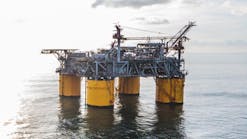The 2019 Atlantic hurricane season is officially over, with Texas (thankfully) avoiding a calamity like 2017’s Hurricane Harvey and 2008’s Ike. But it’s inevitable that another major hurricane will zero in on one of the most sensitive and vital places in the country.
While any hurricane strike anywhere along a US coast is major and tragic, as Texas A&M University at Galveston notes, a direct hit on the Houston Ship Channel would bring a national financial catastrophe and possibly a staggering amount of death.
Much of the economic fallout and loss of life in Houston, however, can be prevented, according to the university.
A new solution
Tired of gambling with the state’s economic lifeblood and its residents’ lives, a group of scientists led by Bill Merrell and Sam Brody at Texas A&M University at Galveston have launched a blueprint to protect Texas.
“Hurricanes Ike and Harvey have shown us the power of nature, and we know it is a matter of time before we get a direct hit on the Houston Ship Channel by a megastorm,” John Sharp, the university’s chancellor said. “I hope we can put a plan in place—a plan like the one devised by Bill Merrell and Sam Brody—before we get crushed.”
Merrell and Brody came up with a Dutch-inspired concept to keep storm surges from inundating some of the most densely populated zip codes and economically vital spaces of the US.
The plan includes giant sea gates across the Houston Ship Channel. They would close when storms approach, while otherwise remaining open for freighter traffic. The plan also involves an enormous levy system that would start with the existing seawall on Galveston Island and extend south down the coast and north the along Bolivar Peninsula.
The concept of Brody and Merrell is called the coastal spine, or the Ike Dike after Hurricane Ike that, alongside its accompanying storm surge, caused more than $30 billion in damage. The storm was considered a near miss, but Brody and Merrell know better than anyone that it could have been worse. And more to the point, much of the damage could have been prevented with more planning and investment.
“What we found was that if the dike was built back in 2008, and Hurricane Ike hit the coast in the same direction, the same path, the structure would have reduced 95% of all residential damages,” Brody said.
Looking ahead, the duo, who are part of The Center for Texas Beaches and Shores (CTBS) at Texas A&M University at Galveston, created a model of the worst-case scenario for Houston. If a 500-year storm barrels straight up the gut of Galveston Bay, it would overtake the Houston Ship Channel, and along its way take offline the country’s most important refineries that supply much of the nation’s gasoline as well as military and commercial jet fuel.
With a direct hit, the effect on Texas’ refining industry would amount to about $170 billion in lost revenue, Brody added.
The broader ramifications would have effects well outside of Texas, as gas prices across the US potentially could reach $8-10/gal, and airlines and military jets wouldn’t have the fuel required to operate.
Implications
Brody put the potential damage to the region into perspective, noting that a major storm easily could cause enough damage to decrease the gross state product by over 8%, translating into about $860 billion of losses.
“That’s something that is entirely feasible, and that’s something that we need to avoid and not wait for the next big storm to take action,” Brody said.
A short video with an introduction by Chancellor Sharp to Professors Merrell and Brody’s Ike Dike vision can be viewed at https://www.youtube.com/watch?v=K2iqXkt7uOY&t=35s.

Robert Brelsford | Downstream Editor
Robert Brelsford joined Oil & Gas Journal in October 2013 as downstream technology editor after 8 years as a crude oil price and news reporter on spot crude transactions at the US Gulf Coast, West Coast, Canadian, and Latin American markets. He holds a BA (2000) in English from Rice University and an MS (2003) in education and social policy from Northwestern University.

